- Articles ›
- Operations and IT ›
- Operations in Disaster Management - Case Study Based Approach Articles
Operations in Disaster Management - Case Study Based Approach
What is a Disaster?
A disaster is a natural or man-made event that negatively affects life, property, livelihood or industry often resulting in permanent changes to human societies, ecosystems and environment.
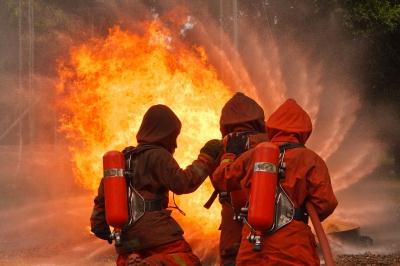
Image Courtesy: freedigitalphotos.net, nokhoog_buchachon
Why are we concerned with disasters?
Below are some graphs showing the impact of disasters:
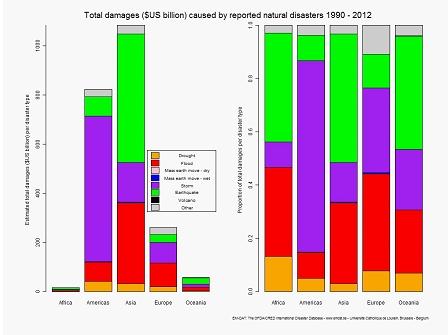
Figure 1 Damages (billion USD) caused by natural disasters
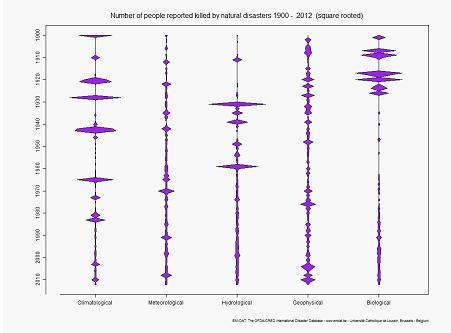
Figure 2 Deaths caused by disasters
These graphs show the impact that disasters have caused in terms of Human Life and in Monetary Terms. The sheer magnitude of these is reason enough to worry about disasters.
Types of Disasters:
There are many ways in which disasters can be classified, however, for the sake of simplicity we would deal with a broad classification in this paper. Broadly, disasters can be classified into 2 categories:
• Natural Disasters : disasters caused by natural forces e.g. – earthquake, volcano, tsunami etc
• Man Made Disasters : disasters caused due to actions of Human Beings e.g. – wars, bomb blasts etc.,
Similarly disasters can also be considered in the business world in terms of their effect on the wealth, brand value as well as existence of organizations e.g. – failure of BL 5C batteries in Nokia cell phones, Toyota Car Recalls etc.,
Why do disasters happen?
“Disasters only occur when hazards come face to face with vulnerability”
A common pattern can be observed with the occurrence of all manmade disasters. The pattern goes as:
• A hairline problem, unnoticed or unattended leading to fracture.
• Presumption that we are immune to disasters
• No or insufficient corrective action
• Lack of proper information flow
Disaster Management:
Disaster management can be defined as the organization and management of resources and responsibilities for dealing with all aspects of emergencies, in particular mitigation, preparedness, response and recovery in order to lessen the impact of disasters.
Operations in Disaster Management
Primarily a disaster can be divided into three phases and the response of the disaster management system should correspond to the phase of the disaster. The three phases are as follows-
a) Pre-impact phase
b) Impact phase
c) Post-impact phase
During the pre-impact stage, the focus should be on disaster mitigation and preparedness for the impending event whereas the post-impact phases have Response and Rehabilitation as the key steps.

Figure 3 Disaster Management Cycle
Mitigation
Disaster mitigation is one of the key components of the disaster management system with an aim to avoid the disaster where possible i.e., in cases of manmade disasters and to lessen the impact of disaster otherwise. Mitigation is an important part of organization’s pro-active approach and requires understanding of risks and demands investment of resources with a long term view. Research suggests that a dollar spent on Mitigation saves 4$ in response a recovery/rehabilitation activities thus signifying the importance of Mitigation activities in minimizing economic losses. The following diagram demonstrates the key steps in the mitigation process.
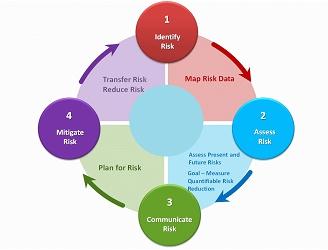
Figure 4 Disaster Mitigation Cycle
Success Case
Cassandro Wash Dam, Arizona, USA
Problem:
• The City of Wickenburg lies close to two major washes, Sol’s and Cassandro wash
• The residences in the city were in the floodway of Cassandro Wash
• Regular flooding resulting in loss of lives as well as property
Solution:
• Construction of Cassandro wash dam
• Cost of construction = 5 million $
Benefits:
• The dam proved effective during Hurricane Nora in 1997 and the severe storms of October 2000 and no flooding problems occurred
• $15 million in damage were avoided
Failure Case
Bhopal Gas Tragedy, 1984, India
Cost of Disaster:
• Death toll over 3800 people
• Total affected people = 700,000
• Contamination of ground water, soil
• Around 200,000 people have permanent injuries
• Out of 3 children born after Bhopal gas tragedy, only 1 survived
Failure of Disaster Mitigation System:
• Inefficient maintenance and inadequate emergency action plans
• Lack of community awareness programmes
• Disablement of MIC tanks alarm system to alert residents in the adjacent areas of impending disaster
• Non functioning of safety management systems
• Ignoring a few minor leaks which happened in the days preceding the actual disaster.
Preparedness
Preparedness is a key link between the pre-impact and post impact phases of a disaster event. The prime purpose of Preparedness is to respond effectively and recover more quickly when disaster strikes. In addition, preparedness efforts also ensure that the resources necessary for responding effectively in the event of a disaster are in place, and that those faced with having to respond know how to use those resources. The activities associated with disaster preparedness are –

Success Case
Cyclone Phailin, India
Preparedness activities undertaken:
• Rapid evacuation of a large number of people beforehand
• Efficient early warnings to the residents through mobile phones and TV
• Construction of hundreds of cyclone shelters beforehand
• Deployment of 2,000 personnel of the National Disaster Response Force for preparedness
• Meetings of state governments with international NGO’s beforehand to draw a roadmap to tackle the aftermath
• Equipping Relief teams with satellite phones and wireless communications sets
• Stockpiling of rations, water and medicines by central and state governments.
Benefits of Preparedness activities:
• Successful evacuation of 10 lakh people
• Total casualties of around 20 people in comparison to 10,000 when a cyclone of similar magnitude hit in 1999
Failure Case
Fukushima Disaster, Japan
Cost of Disaster:
• 6000 sq.kms of area surrounding the power plant has been declared uninhabitable
• 150,000 people lost their homes and possessions
• Total economic loss of 250 to 500 billion $
• Contamination of fish and ground water
Failure in preparedness:
• Lack of an emergency response plan
• Negligence of plant operator in disaster preparations and failure of government regulators in supervision
• Miscommunication between operator, government and top nuclear officials
• Failure of provide people with a accurate and timely information regarding the crisis
Response
Response is a key part of Reactive approach to disaster management. Response includes activities that address the short-term, direct effects of an incident. Response includes immediate actions to save lives, protect property, reduce economic loss or dilution of brand value in case of businesses.

Examples in Business scenarios
Johnson and Johnson, 1982
Background:
Seven people died after taking extra-strength Tylenol capsules that had been laced with potassium cyanide, a deadly poison.
Response:
The company put customer safety first, recalled 31 million bottles of Tylenol worth $100 million worth and stopped all production and advertising of the product. It also got involved with the Chicago Police, FBI, and FDA in the search for the killer, and offered up a $100,000 reward. Post-crisis, the company reintroduced Tylenol with new tamper-resistant packaging and $2.50 off coupons thereby creating a positive image about the company and helping the Tylenol brand to recover
Rehabilitation:
Rehabilitation in context of disaster management is to bring back things to normal state/ pre existent state. The challenges of operations in rehabilitation are:
• Fulfilment of scope i.e.- bringing things back to normal, overcoming all technical barriers
• Minimize Time
• Minimize Cost
Timely action is the Key to effective Rehabilitation/Recovery.
Example of Rehabilitation in terms of Natural Disasters:
Gujarat Earthquake, 2001
Total estimated losses of $ 1.3 Billion and more than 1 Million houses were to be repaired and reconstructed apart from rehabilitation of water distribution system, restoring of electricity, slum development, restoration of roads etc.
For this many special bodies were formed including Gujarat Emergency Earthquake reconstruction Project (GEERP) which reconstructed and repaired the houses in record time of 2 years. For the rehabilitation work, the Gujarat State Disaster Management Authority was awarded the UN SASAKAWA award.
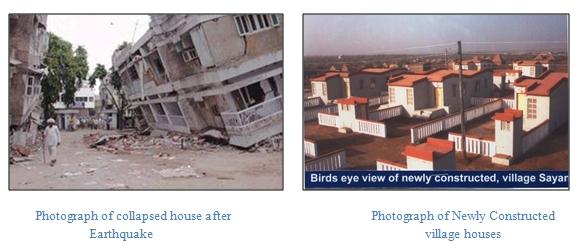
Example of Rehabilitation in Business situations:
Cadbury Dairy Milk , Maharashtra, 2003
The reporting of worms in chocolates led to fall in sales by 30% and also affected Cadbury’s brand perception as a whole. As a means to reinstate its quality program and also its perception as a quality brand Cadbury came up with 3 Ideas:
• Launch of project “Vishwas” educating 1,90,000 retailers across key states
• New Metallic Poly Flow packaging at an additional cost of 10-15% without increasing prices
• High investment on advertisements roping in Amitabh Bachchan to rebuild consumer confidence
All these steps helped Cadbury regain its leadership with 70% market share and took 4-6 months with increase in spending by over 15% for the last quarter of FY 2003-04.
Conclusion:
From the examples we have reflected upon in the case, some key learning with relation to operations in disaster management are:
• Disasters occur due to a chain of mistakes starting from a hairline, thus a vigil attitude can prevent disasters from happening
• A proactive approach and preventive measures can substantially reduce the impact of disasters
• Early detection Early Resolution (EDER) is the key to effective disaster management
• Gap analysis and operations for gap reduction can prevent disasters
• M3 approach – managing multiple mistakes simultaneously
This article has been authored by Suneel Palukuri,Prabudh Jain from MDI Gurgaon
References
1. Robert, E.M. (2005). Will Your Next Mistake Be Fatal: Avoiding the Chain of Mistakes That Can Destroy Your Organization. New Jersey: Pearson Education
2. Mitigation Success Stories. (2002, January). Association of State Flood Plain Managers Retrieved from http://www.floods.org/PDF/MSS_IV_Final.pdf
3. Jeanette, S., Kathleen T (2006). Disaster Preparedness: Concepts, Guidance, and Research. Assessing Disaster Preparedness Conference
4. Anil, K., The Gujarat Earthquake 2001.Asian Disaster Reduction Center Conference
5. When preparedness works: Case of Cyclone Phailin. (2013, October). All India Disaster Mitigation Institute Retrieved from http://reliefweb.int/sites/reliefweb.int/files/resources/99%20Cyclone%20Phailin.pdf
6. Bhowmick, Nilanjana (October 13, 2013). Preparedness Helps India Combat Cyclone Phailin With Minimal Casualties .Time World,. Retrieved 28 January 2014.
7. White, Martha. 8 infamous business disasters .NBC News,. Retrieved 28 January 2014.
8. Mure (February 28, 2012), Japan Ill-prepared for Fukushima disaster. Financial Times,. Retrieved 28 January 2014
9. Kaplan, Tamara. "The Tylenol Crisis: How Effective Public Relations Saved Johnson & Johnson". The Pennsylvania State University. Retrieved February 12, 2010.
10. "Federal Emergency Management Agency". FEMA.gov. Retrieved 28 January 2014
11. UNDRO-United Nations Disaster Relief Organization, 1984.Disaster Prevention and Mitigation: A Compendium of Current Knowledge. Vol. 11, Preparedness Aspects. Geneva: Office of the United Nations Disaster Relief Coordinator.
Views expressed in the article are personal. The articles are for educational & academic purpose only, and have been uploaded by the MBA Skool Team.
If you are interested in writing articles for us, Submit Here
Share this Page on:
What is MBA Skool?About Us
MBA Skool is a Knowledge Resource for Management Students, Aspirants & Professionals.
Business Courses
Quizzes & Skills
Quizzes test your expertise in business and Skill tests evaluate your management traits
All Business Sections
Write for Us